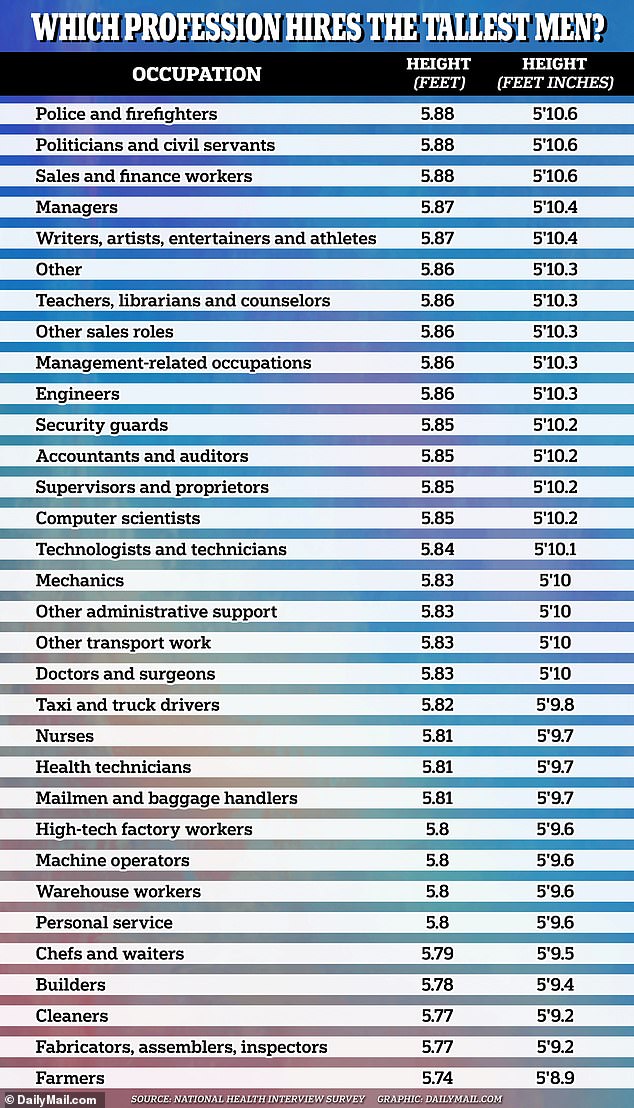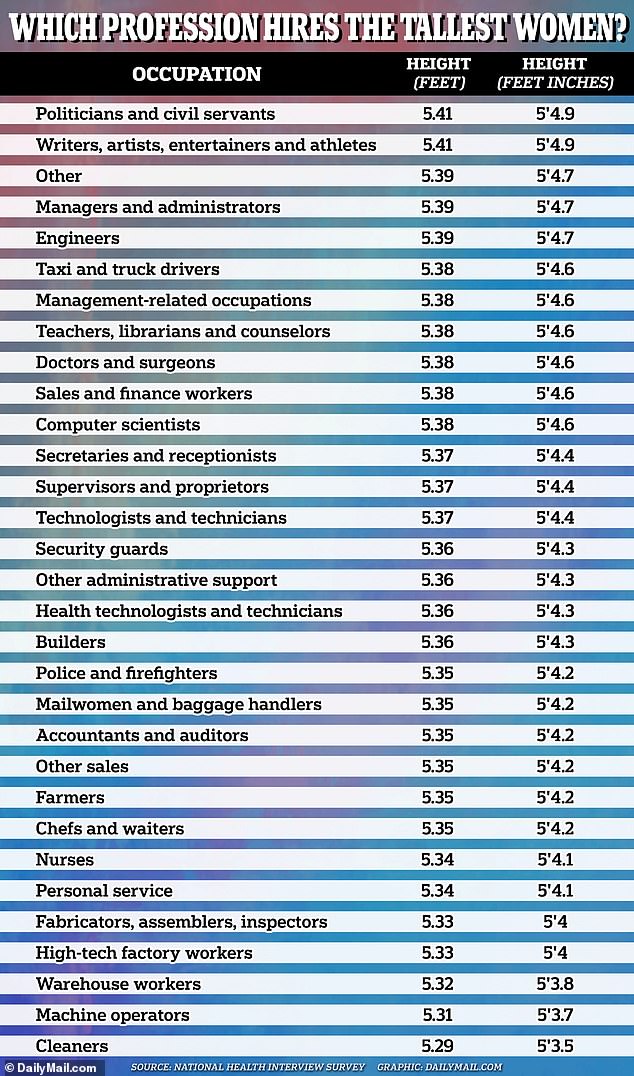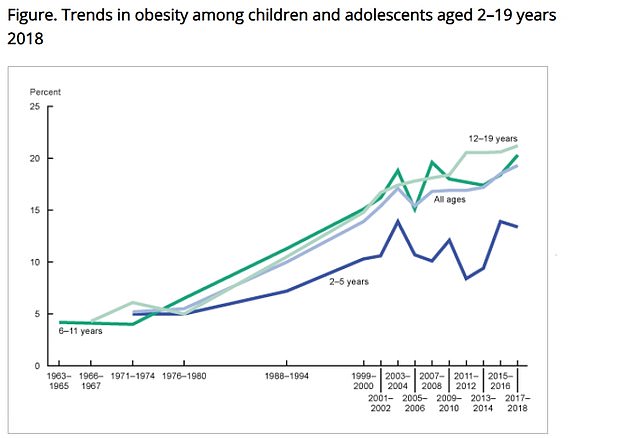Americans are SHRINKING: Data shows men and women are up to half an inch shorter now than they were in the 1980s
Much has been written about America's growing waist size, but new official figures highlight a lesser-known problem: men and women in the US are shrinking.
Data from the Centers for Disease Control and Prevention (CDC) shows that women have shrunk an average of almost half an inch since about 2000, while men have shrunk about a tenth of an inch.
The 'great shrinkage' seemed to start in children born in the 1980s – around the same time obesity began to rise and fast food and highly processed foods became more popular.
Experts believe the phenomenon is related to poor nutrition and the fact that many children are obese, leading to earlier puberty and a shorter growth spurt.
The graph above shows the average height of people in the year they were born
The analysis drew data from the National Health Interview Survey (NHIS), which interviews a nationally representative group of 87,500 people annually.
It asks them important questions about their weight and height, as well as other factors such as occupation, income and ethnicity.
The report includes data for white adults born through the year 2000.
On average, adult men born between 1995 and 2000 were 6 feet tall, compared to 6 feet tall for those born 20 years earlier between 1980 and 1985.
Data were available on adult women born in the last five-year period, measuring 6 feet tall – compared to 6 feet tall for those born 20 years earlier.
Americans' height has increased about 4 inches over the past 150 years — driven by innovations in medicine such as the advent of antibiotics and the advent of mass production and high-protein diets.
But data shows this trend has reversed in recent years, as food has become less nutritious but more calorie-dense.
Analyzing the data, North Carolina economics professor Dr. John Komlos told the newspaper WashingtonPost there was a clear connection between America's shrinking height and the obesity epidemic.
“Childhood obesity is associated with earlier puberty in both boys and girls,” he told the publication, with children who entered puberty earlier having smaller growth spurts.



The above graph shows the childhood obesity rate in the US and how it has risen sharply
Dr. Louise Greenspan, a pediatric endocrinologist at Kaiser Permanente San Francisco, agreed, saying it was related to the impact fatty tissue has on the body.
He said being bigger leads to higher levels of estrogen in the body, which can trigger puberty earlier. Estrogen can be made by fat cells.
“Higher estrogen levels can lead to more mature bones,” he said. 'So your bones grow bigger faster, but their growth plates fuse sooner.'
This was especially true for young girls – who generally hit puberty earlier – he said.
Further analysis showed that the reduction in height was much sharper among people from a more deprived economic background, while there was little change in height among people from an affluent background.
This may be the case because poorer families eat more processed and less nutritious foods, causing obesity rates to rise and height to decrease.
Research shows that children from disadvantaged backgrounds are more likely to be obese.
Other studies have also shown declines in other key measures, including life expectancy and the well-being of young women.
The data from the survey also looked at the height of employees by industry.
Among men, it was found that those who worked as police officers, politicians and sales or financial experts were the longest.
At the other end of the scale, farmers, factory workers and cleaners were on the banks.
And for women, politicians, entertainers and managers were the professions where women were most likely to be tall – while cleaners were the shortest.
Research shows that people choose taller people for these professions because they think a taller person will impress customers more.
On the other hand, professions with the smallest workers often employ immigrants – who grew up on a diet different from that in the United States.
